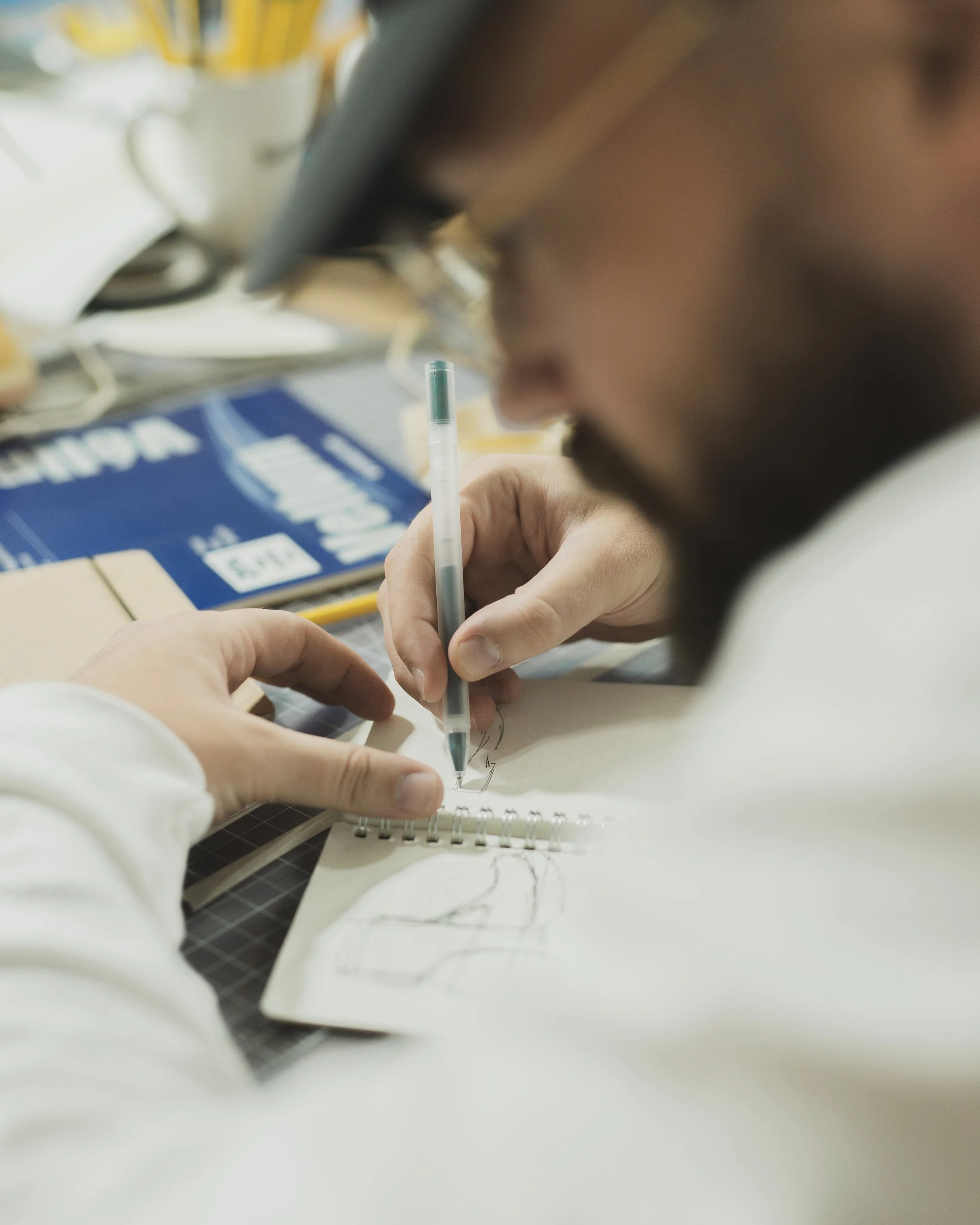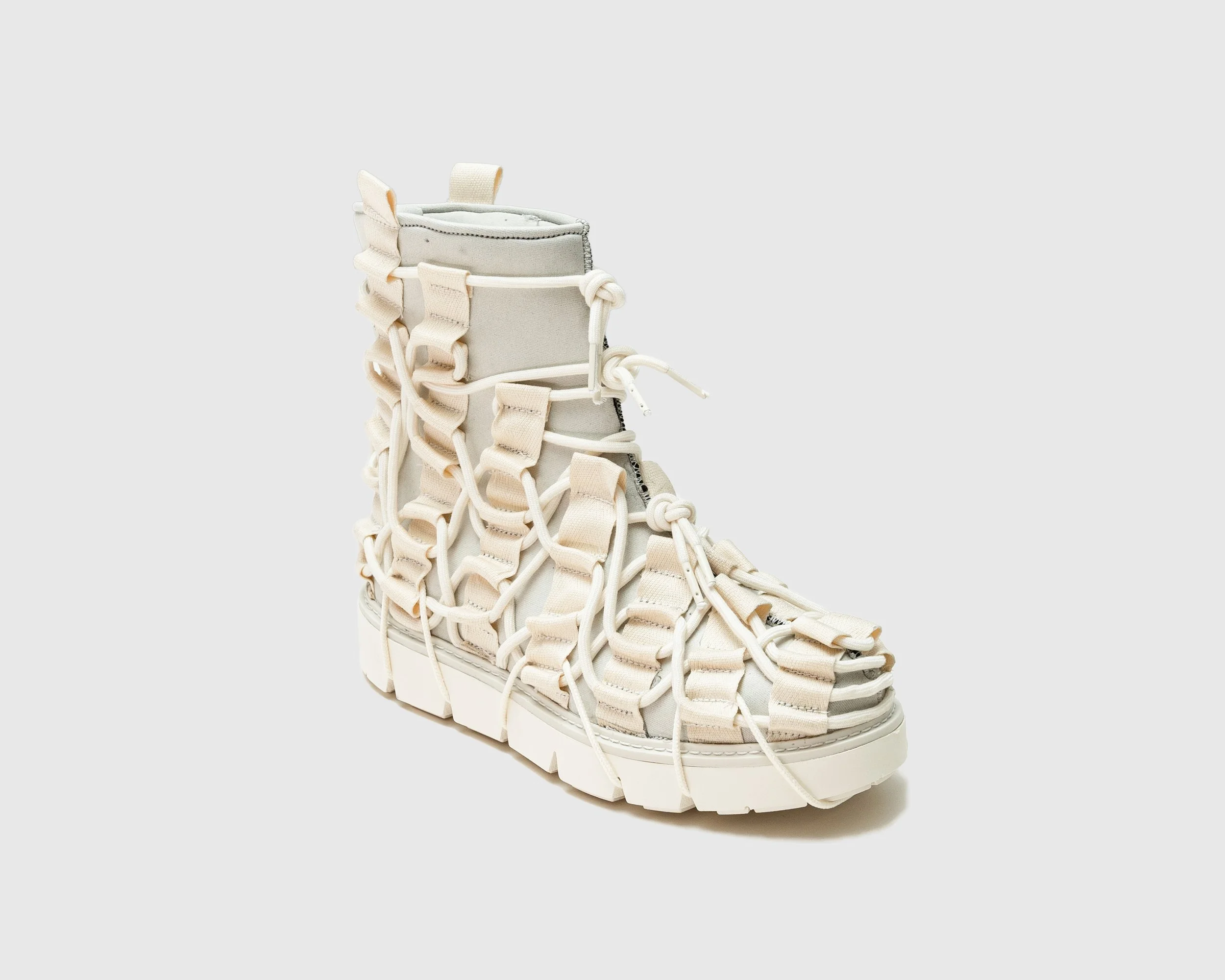Timberland CONSTRUCT:10061
Technically Transparent Boot Experimentation
Words: James Dean
Since CONSTRUCT:10061 came to fruition, CONCEPTKICKS has worked in collaboration with legendary bootmakers Timberland to explore and conceptualise footwear innovation, bringing together cross-industry designers to challenge convention. For the first time since the pandemic began we once again brought designers together in a space never before used for CONSTRUCT: 10061; The Shed, Timberland’s unique New Hampshire-based prototyping lab, to test the limits of footwear design. Being the first major gathering of these designers in one space, this was a unique collection of tech specialists, product designers, fashion creators and all-round innovative makers.
Creating a playing field like no CONSTRUCT:10061 before, this round of CONSTRUCT:10061 altered slightly from our previous editions. Featuring a smaller roster of creative guests than previous workshops allowed for a more refined and focussed design experience for those involved. Alongside the removal of a heavy emphasis on upcycling, which was present at previous CONSTRUCT:10061 events, the tighter team were encouraged to use the specialist machinery present in The Shed. Timberland tapped into its making equipment old and new, from the older DR factory machines, which have been relocated from Timberland factories to The Shed, to contemporary making equipment, including laser cutters and 3-D printers, where amongst the arsenal at the fingertips of the selected creators.
Working closely with Timberland ACE (Advanced Concepts and Energy) the creators were tasked with creating a prototype pair of boots, utilising materials that demonstrate the progressive eco-conscious design considerations we share at CONCEPTKICKS, all within a single colour palette: ‘Cosmic latte’. This choice came from our own Daniel Bailey, who favours rendering footwear designs with highlight and shadow, showcasing a design’s rawest form. This approach resulted in an even platform for judgement of each design for this front-facing workshop, denying any response to a design to be stunted by the colour choices, especially given the previous scavenger hunt often required for finding certain materials for CONSTRUCT:10061.
Themed around TECTRA (technical transparency), the designers approached the brief with the constructive relationship between humans and materials in mind, looking to “reenergise Timberland’s iconic silhouettes” while exposing the natural materials used to make them. Layering was crucial in this workshop, as each creator aimed to create something individually impressive yet familiar to the Timberland history. With each new silhouette being made from the ground up, the final prototypes demonstrate the productivity of the few days spent designing them, perhaps being the best CONSTRUCT:10061 workshop yet.
JT-AK-OL-BS-004
Inspired by the layers of an onion, Jaimus Tailor and Aisha Kuijk’s boot features a layered fabric upper, emphasising the natural movement the fabric makes around the wearer’s foot. While the initial idea was to have the foot stand atop the fabric so the layers would wrap around the foot to create a structure, potentially even heat wrapped, the boot instead utilises a more deconstructed design. The organic structure of the upper design is solidified in boot-form atop a minimally rugged Vibram sole. This design is especially representative of Tailor’s study into the process of deconstructing garments alongside the process of reforming them, with the boot’s own dismantled fabric upper being formed into a new structure. Similarly, this naturalistic shape references Kuijk’s own appreciation of the natural world, being unconventional and less mechanically focused when compared to standard footwear design.
DB-JC-TS-WH-004
With the silhouette of Timberland’s World Hiker Boot being a staple of the brand, Daniel Bailey’s version, with help from both CONCEPTKICKS’s John Chen and Timberland ACE’s Tadd Smith, revamps the boot through considered material choices, while still allowing this timeless design to stand out for itself. Through layering dyneema leather with recycled pet spacer mesh for the mid and upper alongside fitting leather sourced from regenerative farms for the collar, the textures update the boot through materiality. Dyneema is known for being a particularly difficult material to work with, with this boot taking perhaps a deceivingly long time to make in comparison to the others showcased, though this did allow the opportunity to test out the design.The Vibram sole was also made chunkier, with it needing to be retroactively sliced and fitted to the shoe due to its size, pushing the boot into a more contemporary realm. This design showcases that the longevity of strong footwear design is something to be recognised and that details can be changed to show the design’s full range of possibilities - in shorter terms: if it’s not broken, don’t fix it.
CD-TW-VL-004
Chris Dixon, a footwear designer from Timberland ACE’s internal team, took inspiration for this laced design from a walk in the forest. Looking at textured direction found within vines in nature, the interwoven laces create a very polarising appearance that also emulates the growth of roots, offering a depth to the outer layers of the shoe with its complexity. Despite this complex appearing design it is actually successful in its simplicity, with the laces being bound to the shoe with tencel webbing straps, yet still unattached in a way that allows for endless customisable positions. Dixon’s design really came together in its later stages, initially with the laces conceptualised to go all the way underneath the sole, the final result, after experimenting with a 3-D printed sole, landed on the use of Timberland own sole as the solid base for the overall boot.
JT-WN-004
The weave clog really speaks to Jaimus Tailor’s design background, with the woven nylon upper being weaved together and fused with lycra on the underside to create a one-of-a-kind fabric, which certainly offers interesting tactility. The interlocking fabric not only creates a checkerboard pattern but also foregrounds the materials used to make the design, done so in a way that does not jeopardise the boot’s structural integrity thanks to the attached lycra. It was here in this process that the shoe’s construction was the most impressive, as Tailor crafted the material and let it drive the process, adapting the product’s design to what the material allowed. The mule silhouette works especially well with this design, with the attached hardware and fastenings tying down the material to the foot, while stylistically adding to the overall visual interest of the shoe. Despite the relaxed design of the upper the clog is elevated through a Vibram sole unit to allow for the potential use in sturdier and more demanding environments, once again reminiscent of Tailor’s outdoor-centric design language.
JC-RL-IN-004
Designed by CONCEPTKICKS’ own John Chen, these adjustable shoes offer a range of silhouettes through their extendable layered collar. John’s expertise in design research is showcased with these boots evoking the works of Isamu Noguchi, with the foldable structure of the collar sharing qualities to the renowned collapsable paper light sculptures. With the manipulation of the structure allowing for it to go from mid to high boot it has the potential to provide coverage for numerous different requirements, expanding the idea of a single multi-purpose boot. Effectively, this design favours neither form or function over the other, as the collapsibility provides options for style but also for varying degrees of protection. The chunky organic Vibram sole contrasts the malleable fabric of the boot, providing a sturdy base, though further thought could suggest in theory the fabric elements of the boot have the possibility to be attached to a variety of soles, offering exciting styling possibilities.
EB-TD-SB-004
Ev Bravado and Téla D’Amore, both behind Who Decides War, expanded on the Super Timberland Boot. Being conceptually focused on the stylistic possibilities of the boot, the silhouette became subject to change here as the duo stacked layers to the sole, elongating the already tall structure of the pair and giving it more of a contemporary edge. The addition of surrounding laces also takes this boot out of the realm of total practicality, adding a flare to the boot not typically associated with a boot as function-focused as this, and with the cosmic latte colour palette here the design features really stand out. Bravado and D’Amore’s boot really takes into consideration how the pair would work in relation to a full fit, with the construction considering beyond just the pair itself, with this refreshing take solidifying the appeal and interest that comes along with having such cross-industry designers come together.
DB-JD-NE-SU-004
As a final day experiment, Daniel Bailey, Jay Diaz and Nate Estabrook of Timberland ACE collaborated on a pair inspired by a shoe designed by Ben Gorham in a previous CONSTRUCT workshop which featured a low hiker fastening system. This galosh-type boot features an internal functioning structure covered by an 83% recycled polyester and spandex upper, giving it an almost skin-like appearance as the interior stretches the outer layer. Though sampled as a two-sole stack, the final internal functioning structure came in the form of a stacked EVA unit placed onto a larger Vibram outsole unit which acts as the foundation for the galosh detailing of the pair. As a raw concept formed in the last day of the workshop, the possibilities for this idea are exciting to consider, and further development would certainly take this idea into some unforeseen ways.
CONSTRUCT:10061 continues to display the exciting potential of footwear design and importantly how truly innovative the minds behind it are. This workshop was a culmination of experienced makers and inventive thinkers, each prepared to let the process of exploration guide them. Every prototype conceived shows the potential of design through different perspectives, from updating silhouettes into more contemporary stylings to allowing materials themselves to dictate the process behind the conception and manufacturing of a shoe. Each process was valuable in its exploration of construction, resulting in the future of multi-purpose footwear in extendable boots, revamping classics through the tall boot and the world hiker, as well as a customisable laced representation of nature. Workshops like this prove that even in just a few days exciting possibilities of design can be achieved when innovative minds come together.
With thanks to the Timberland ACE team: Alex Dardinski, Tadd Smith, Nate Estabrook, Kurt Schnackenberg, Dave Hass and Dimitri Fonti.
All photo credits: Josh Alas









































